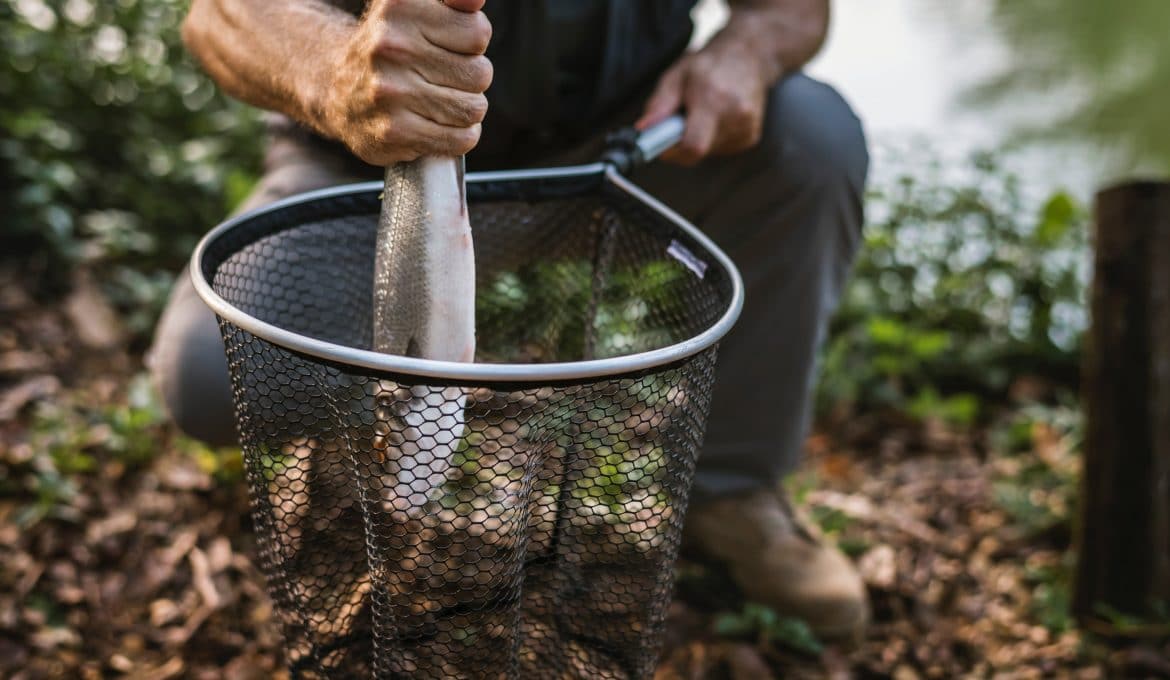Fishing without a proper net is almost like fishing without a rod. If you plan on landing anything that puts up a decent fight you want to have a net on your side—not only to protect yourself and your lure but to make sure the fish doesn’t get away.
I can’t tell you how many times I’ve lost a fish right next to the boat because I didn’t get it into the net quick enough and it unhooked at the last second.
For recreational anglers, there are a few different types of nets you want to look into. In this article, we’re breaking down the different kinds of nets and the materials you want to see on them.
Landing Nets
These are the most common style of the net, and every angler should have one in their boat or by their side at all times. They come in a variety of different sizes and with different materials.
The type of fish you plan on catching will determine what size net you need. If you’re fly fishing in a small river or stream, you don’t need a huge net whereas someone fishing deep waters for musky would want a much larger net.
Landing Net Materials
You’ll most commonly find rubber, coated nylon, and non-coated nylon and they each have their pros and cons.
You want a net that doesn’t harm the fish when you catch it, so rubber and coated nylon are the best for that. These nets are smooth, and they make it easy to bag the fish and get them back out of the net so you can release them.
Non-coated nylon can get rough almost like a rope which scrapes the fish and removes scales plus it also makes it difficult to get them out of the net because tangling and knotting are common with this style. They are more affordable but not by much, so it’s worth the extra couple dollars to make things easier on yourself.
You also want to pay attention to the size of the mesh on these nets because some of them can run as large as two inches apart between weaves. If you’re fishing a small stream, you don’t want big holes in the mesh because that increases the likelihood of you tangling up your fish and possibly hurting it. But large mesh also moves smoothly throughout the water so you can net the fish easier.
Landing Net Handles

Another important factor to consider is the handle on your net. Short handles work great for small shallow waters and for bagging a fish right beside the boat. The obvious downside is that the fish needs to be right next to you to bring him in.
Longer handles work great for deeper waters that may be rough and choppy, so you don’t have to worry about bringing the fish in real close. Some long handles can reach as long as eight feet, so once you have the fish nearby if you have someone with you, they can operate the net from a distance.
My favorite type of fishing handles are the newer sliding handles that adjust based on the amount of length you need. They allow you to take up less space in your boat and you can choose how long you want them to be depending on the job you’re facing.
Dip Nets
These are small nets that are similar to the kind you would use at your home fish tank. They get used for the sole purpose of retrieving bait from your bucket or chest. These nets are not of the same quality as landing nets, but they don’t take as much of a beating.
The main advantage of having a dip net is to keep your hands out of the water as much as possible when it’s really cold outside. If you’re fishing during the cold weather, you don’t want to have to sink your hands into the bait bucket all the time. Keep a few of these nets onboard at all times because they have a tendency to get lost and broken.
Cast Nets

If you’ve ever watched a commercial angler work, these nets function similarly. They’re a large round net with weights on the corners, and you use them by throwing the net over a school of fish, and once it sinks far enough, you use a throw-line to retrieve it and hopefully find a bunch of baitfish inside.
As a recreational angler you may not ever need to use this, but if you frequently fish large bodies of water or oceans/seas, you can capture a lot of baitfish in a short amount of time using this strategy. It’s worth thinking about because the nets cost much less than it would cost you to buy as many baitfish as you could catch in a couple throws.
If you don’t have a fishing net as part of your arsenal of tools you want to invest in one before you hit the water again. Using a net makes bringing in fish a lot easier and reduces the likelihood of you losing your catch right before you get it in the boat.
Most recreational anglers use landing nets and dip nets consistently so I would recommend starting there. Stop in your local Gander Outdoors and find the right material and size for your needs.




